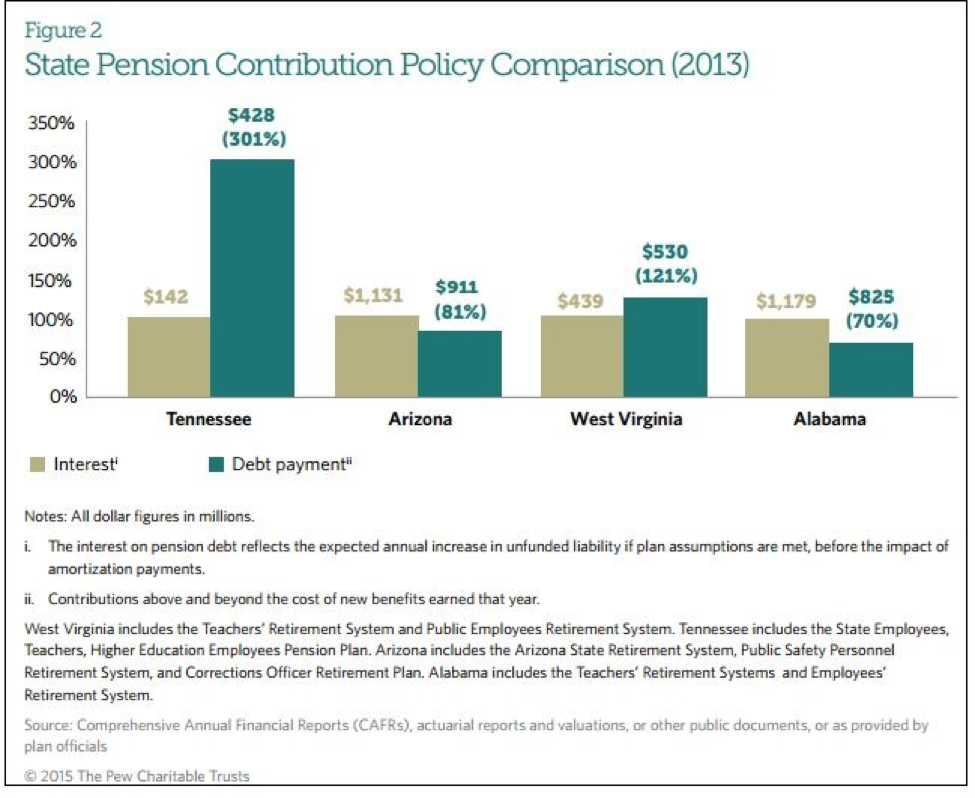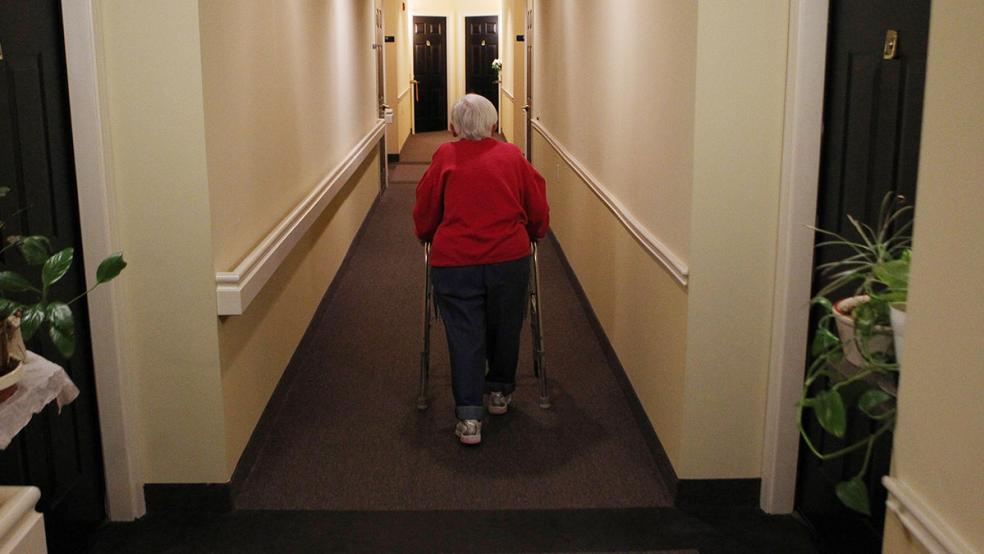Governments across the country are facing down at least $1.7 trillion in unpaid pension costs for public workers. As these growing commitments squeeze local budgets and crowd out essential services, taxpayers are being asked to cover a larger bill—and get less in return.
Public education is the largest and potentially the most important sector to be affected by pension crowd-out. Almost every state increased teachers’ retirement benefits in the booming 1990’s, but those increases were not accompanied by responsible funding plans. By 2003 teachers’ plans were short by $235 billion, and by 2009, pension debt had more than doubled to $584 billion.
Related: States Face a $1 Trillion Pension Problem: Here Are the Worst 10
Market growth since the Great Recession has barely put a dent in the shortfall, which still totals around $500 billion. Carrying such a sizable debt is expensive and has resulted in large cost increases.
These costs inevitably cut into education spending. Between 2000 and 2013, pension contributions per pupil increased at a rate five times higher than total education expenditures. This did little to halt the growth in debt: Pension debt per pupil increased by $9,588 over this period, more than nine times larger than the increase in total annual education expenditures per pupil.

Almost every state has experienced large pension cost increases, but eight states have had faced a particularly difficult budgetary challenge. Arizona, Colorado, Indiana, Michigan, North Carolina, Nevada, Texas, and Wisconsin experienced the double whammy of declining per-pupil expenditures and growing pension contributions. As these governments spend more on teachers, they are spending less on their students.
Among the losses: Per pupil spending on equipment, facilities, and property fell by 27 percent between 2000 and 2013, likely resulting in a growing backlog of expensive repairs and replacements that will need to occur sometime down the road.
Related: States Keep Using Gimmicks to ‘Balance’ Their Budgets
Classrooms also felt the squeeze. Per pupil spending on instructional supplies (e.g., textbooks) declined by 10 percent nationally, and more than half of states (28) spent less per pupil on instructional supplies in 2013 than in 2000.
Teachers also directly experienced the effects of pension cost crowd-out. Salaries were flat over the same period while retirement benefits were reduced in almost every state, sometimes by very large amounts. Pension systems meant to protect teachers are now resulting in stagnant salaries, reduced retirement benefits, and less spending on classroom supplies, equipment, and building upkeep—all with very real implications for student learning.
Since 2013 the crowd-out pressure has only intensified as pension contributions grew by another 28 percent by 2015. Moreover, without meaningful reform, there is no relief in sight. Even if teachers’ pension plans achieve their assumed rates of return over the next decade, taxpayer cost is expected to grow at a rate higher than the recent trend for budget growth. However, given current economic conditions, it is more likely that plans will fall short of their investment targets.
Related: Apathetic Workers in State and Local Government Are Costing Taxpayers Billions
If teachers’ plans only achieve an annual return of 6 percent, aggregate pension debt owed to teachers’ plans would be expected to have grown by roughly 70 percent by 2025, while taxpayer contributions to educator pensions would be expected to have grown by 75 percent. The states expected to experience the largest pension cost growth include California, Colorado, New Jersey, and Texas where average annual growth could approach 10 percent or more.
Proponents of current pension systems are quick to exclaim that there is no pension crisis. While most systems are not on the brink of failure, retirement costs per pupil have more than doubled since 2000 and are approaching 10 percent of all education expenditures. Rising retirement costs are crowding out important education spending, and without reform, the problem will only get worse over the next decade.
It’s time to come together to create sustainable retirement savings systems instead of waiting idly by until a real crisis develops.
Josh B. McGee is a senior fellow at the Manhattan Institute and author of the new report, “Feeling the Squeeze: Pension Costs Are Crowding Out Education Spending.”





